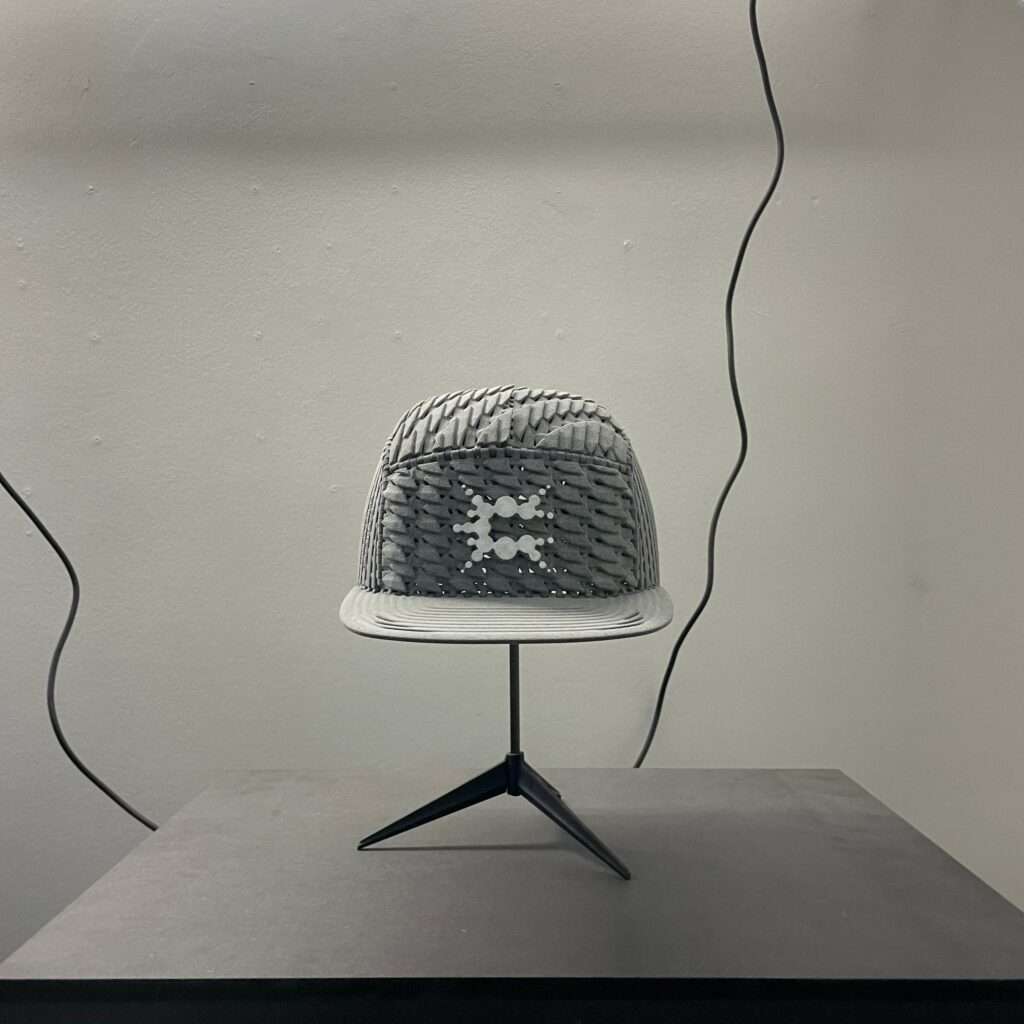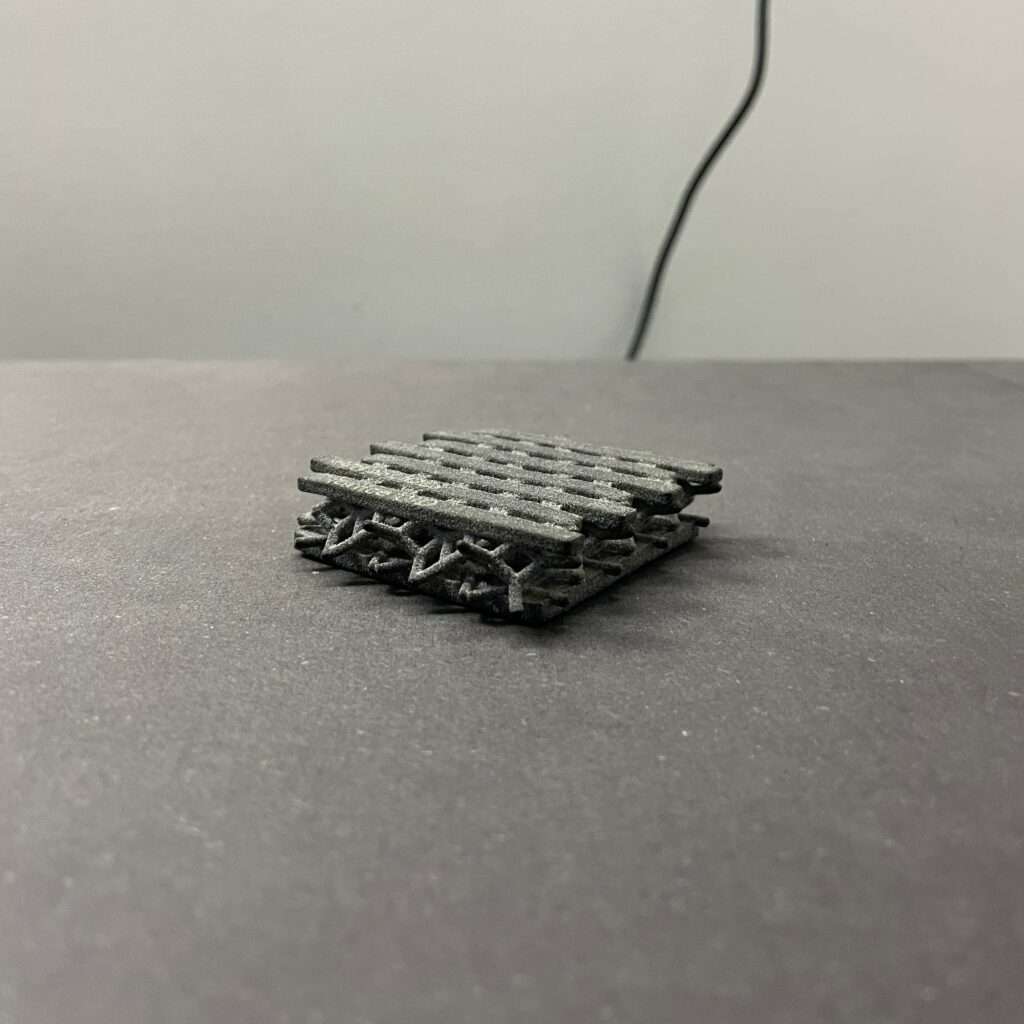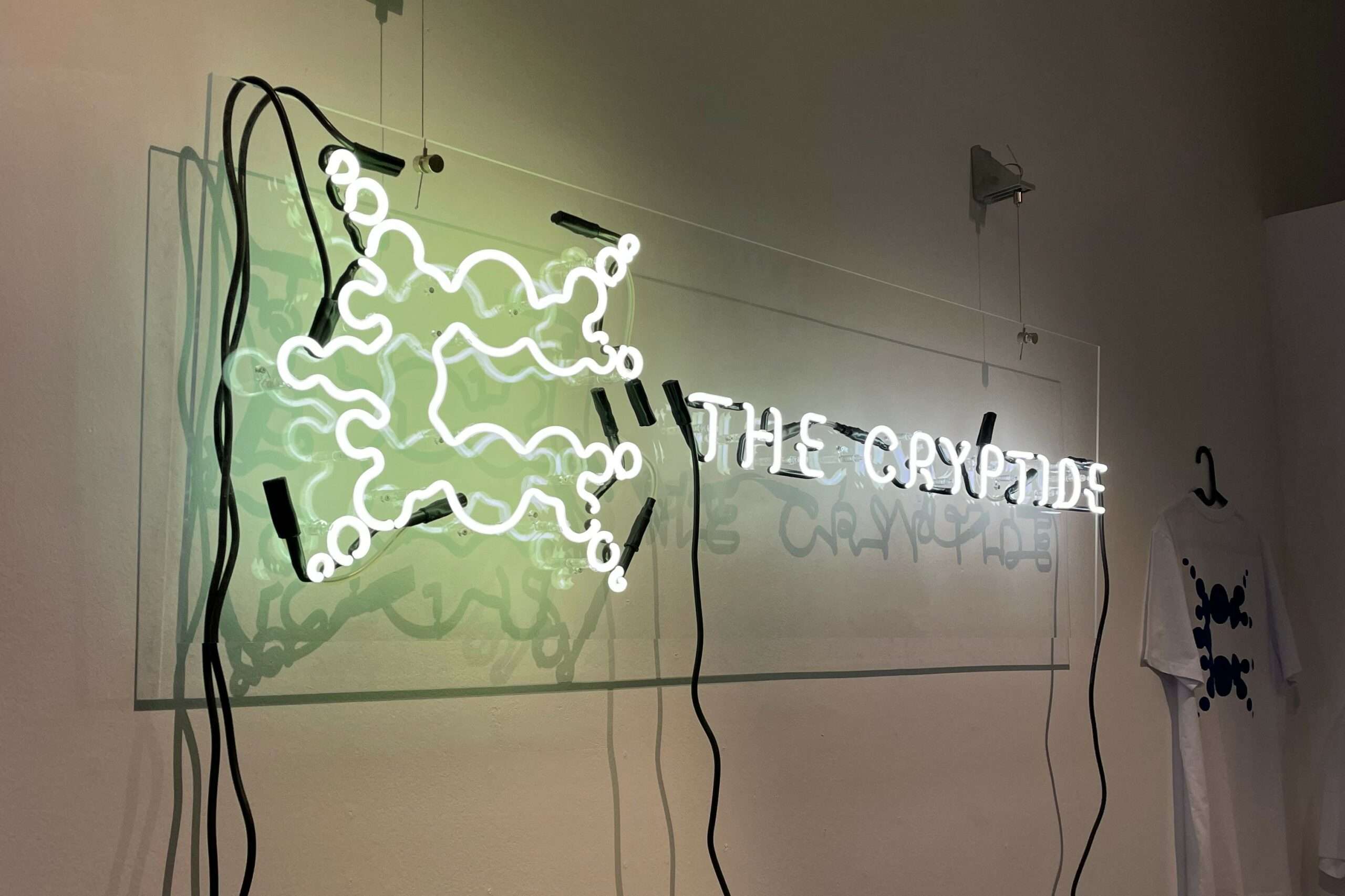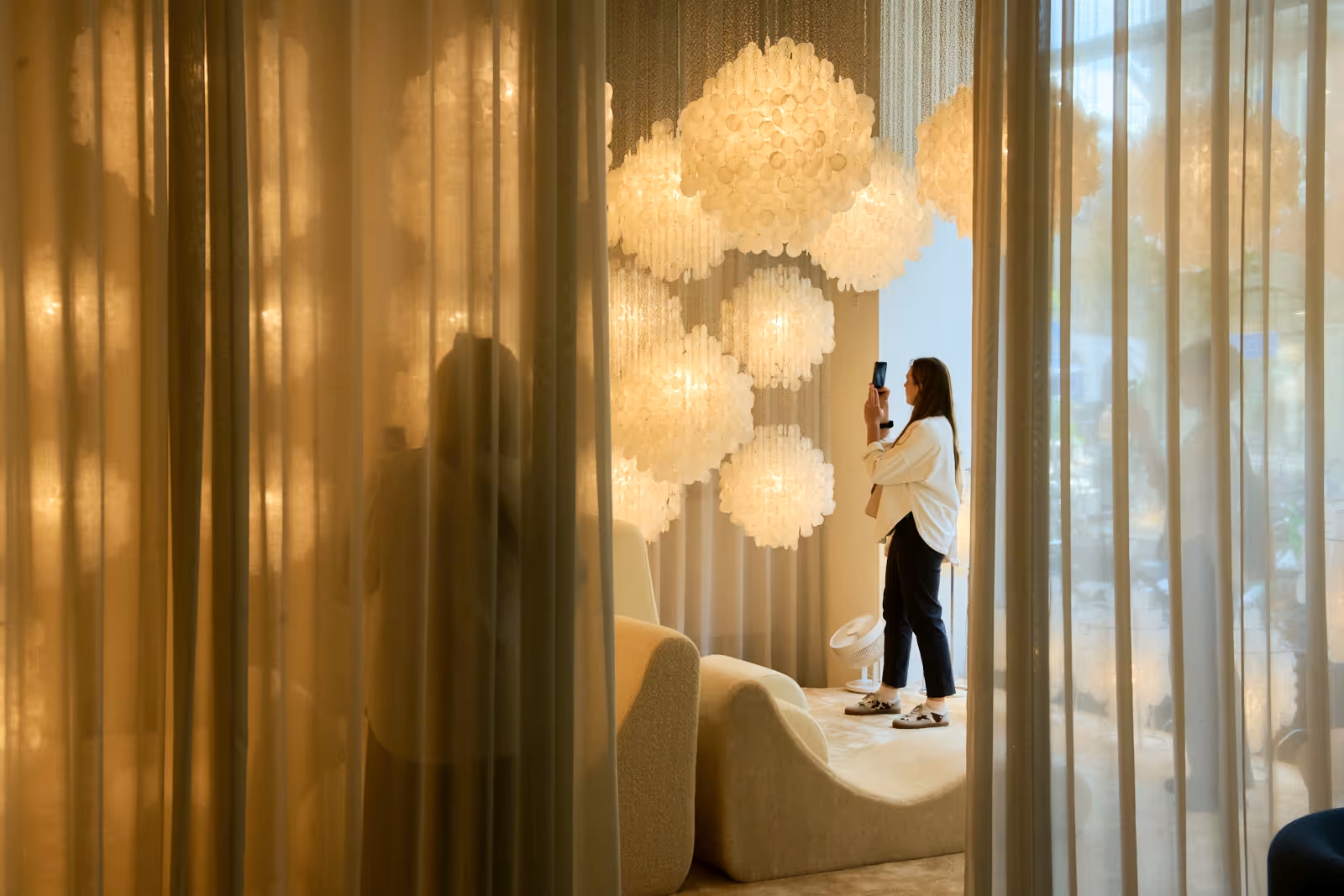Header: Leonor Gomes
In rainy but always beautiful Paris, this year’s Paris Fashion Week filled the city with the latest in fashion design, intensifying the already buzzing Parisian energy. Part of the event’s network of showrooms is Galerie Data, a small gallery near Metro République where Stephan Henrich chose to set up camp. This space was chosen for both its size and its focus on generative art, which aligns with the designer’s overall approach to his work, so the works were showcased amidst neon lights, a robot on the wall, and even some German DJs playing techno—which somehow heightened the whole experience. With a talkative and very interesting friend, François Roche, and visitors, like Solihull, who were engaged and supportive, Henrich told us all about his brand and interests. But why a DJ, you might ask? Well, this was Henrich’s Paris Fashion Week soirée, and imagine how happy we were to have been invited.
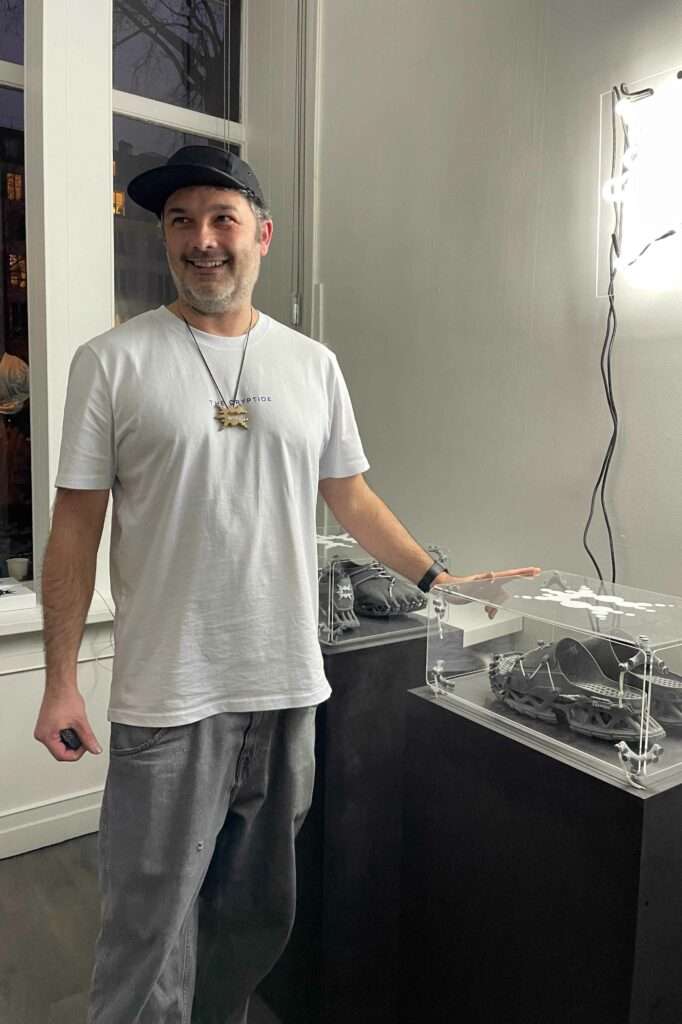
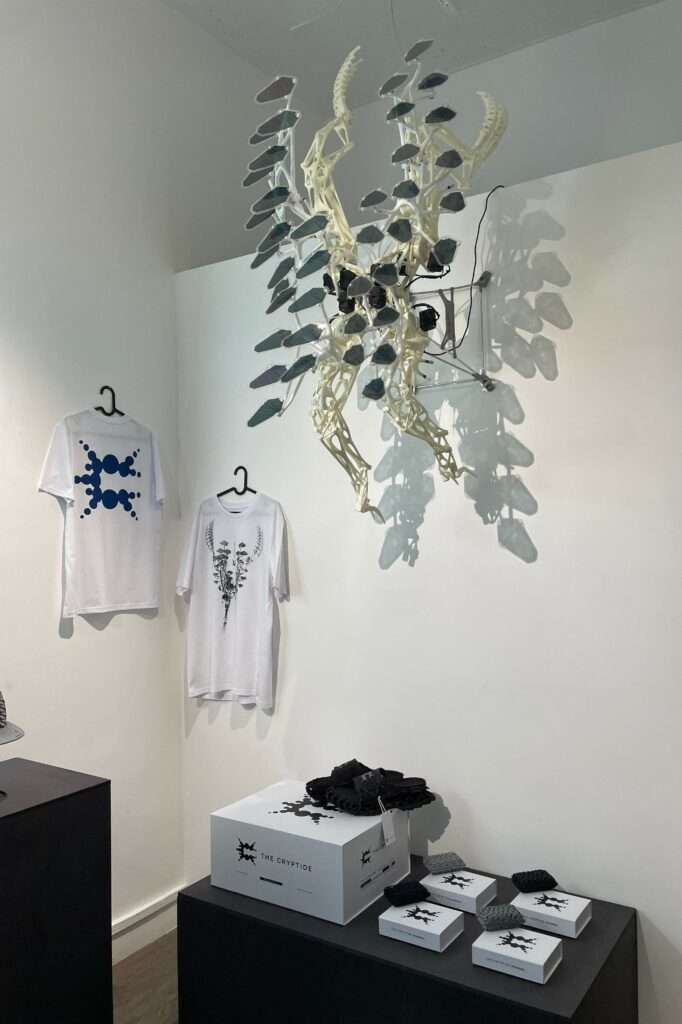
The designer chose to bring all of his favorite pieces to Paris, including the famous Cryptide One sneakers, which are fully 3D-printed sneakers made from flexible TPE using the Sintratec S2 system, a laser sintering process that allows for precise customization through 3D scanning. With a smile and a clear excitement, the designer walked us through the design, talking about the sock-like upper shoe and its perforations, the segmented sole and its different support points, and a midsole designed with everything he had learned as an architect in mind.
Alongside the sneakers, the designer showed one of his latest creations, The CrypSlides, a sturdier slip-on variation of the original sneakers that could easily become a suspension-obsessed person’s favorite shoe. Alongside this new design, the showroom included white T-shirts adorned with visual elements connected to the sneaker’s technology and even a wallet designed with interwoven hexagons forming pentagonal shapes. Perhaps the most eye-catching element of all, a large robotic installation was mounted on the wall, moving continuously and helping conversations run smoothly as you can’t help but ask, “What is that?” To wrap the ambiance together, a promotional video played repeatedly in the background, and neon lights illuminated the space.
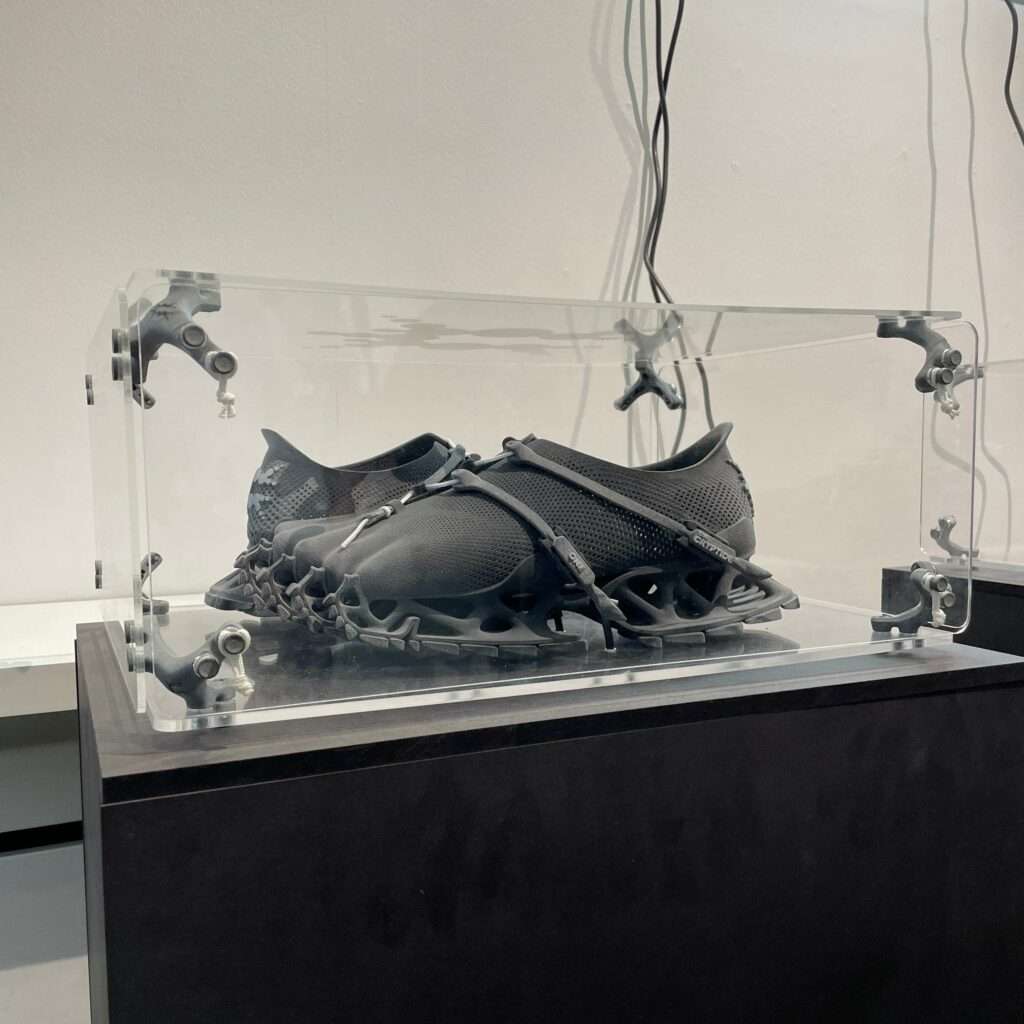
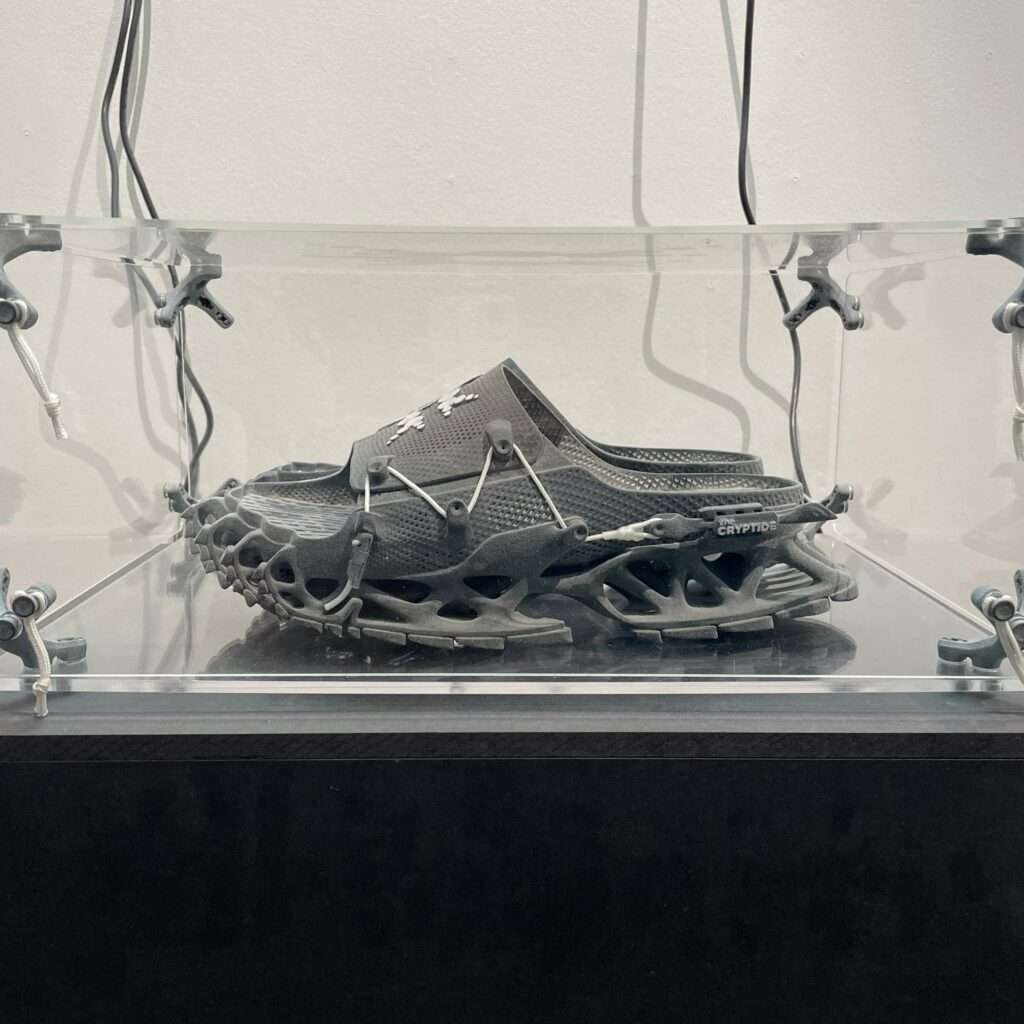
We quickly learned that this wasn’t Henrich’s first time at Paris Fashion Week. However, his official participation only began in September 2024 after attending the previous year to determine whether it would be worth presenting his work. After the positive decision, the event has proved to be helpful, as it has helped him expand his network, leading to conversations with platforms, showrooms, and brands—including Adidas—while also drawing interest from a London-based radio host who is a “sneaker-head,” as the designer put it. Because there is a big competition in the market of 3D-printed shoes, Henrich decided that hosting a soirée was not only a great way to make the best out of his time in Paris but also to potentially gain visibility in an industry where standing out is essential.
After some talking, the past came up, as it normally does, and we began to learn more about what led Henrich to this specific gallery on a rainy Friday afternoon in Paris. His transition from architecture to fashion design was not planned but developed over time, beginning in 2010 when he explored how architecture could be perceived as something alive, which led him to work with robotics and 3D printing. After a ten-year gap, he returned to 3D printing. He started working with Stuttgart-based brands, developing patterns that later became central to his current designs, which can be particularly witnessed in detail in the walled.
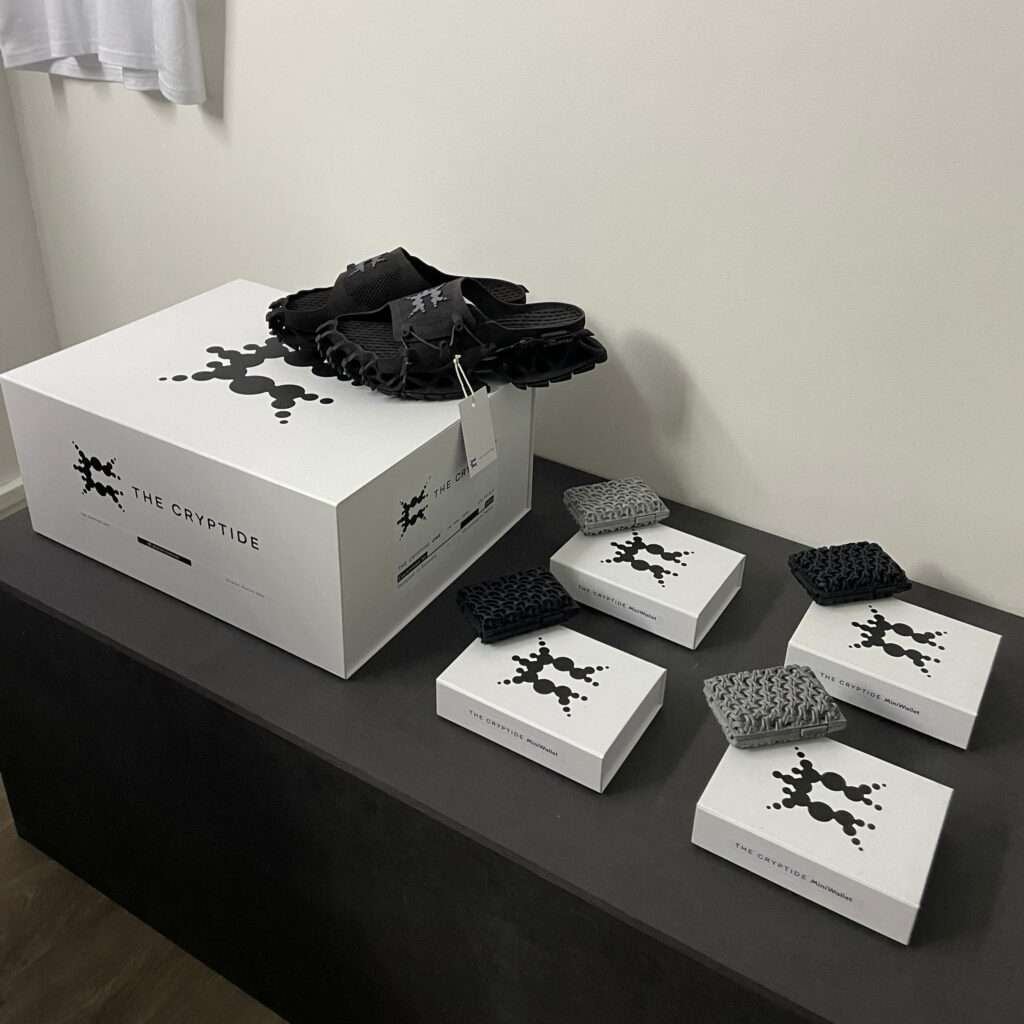
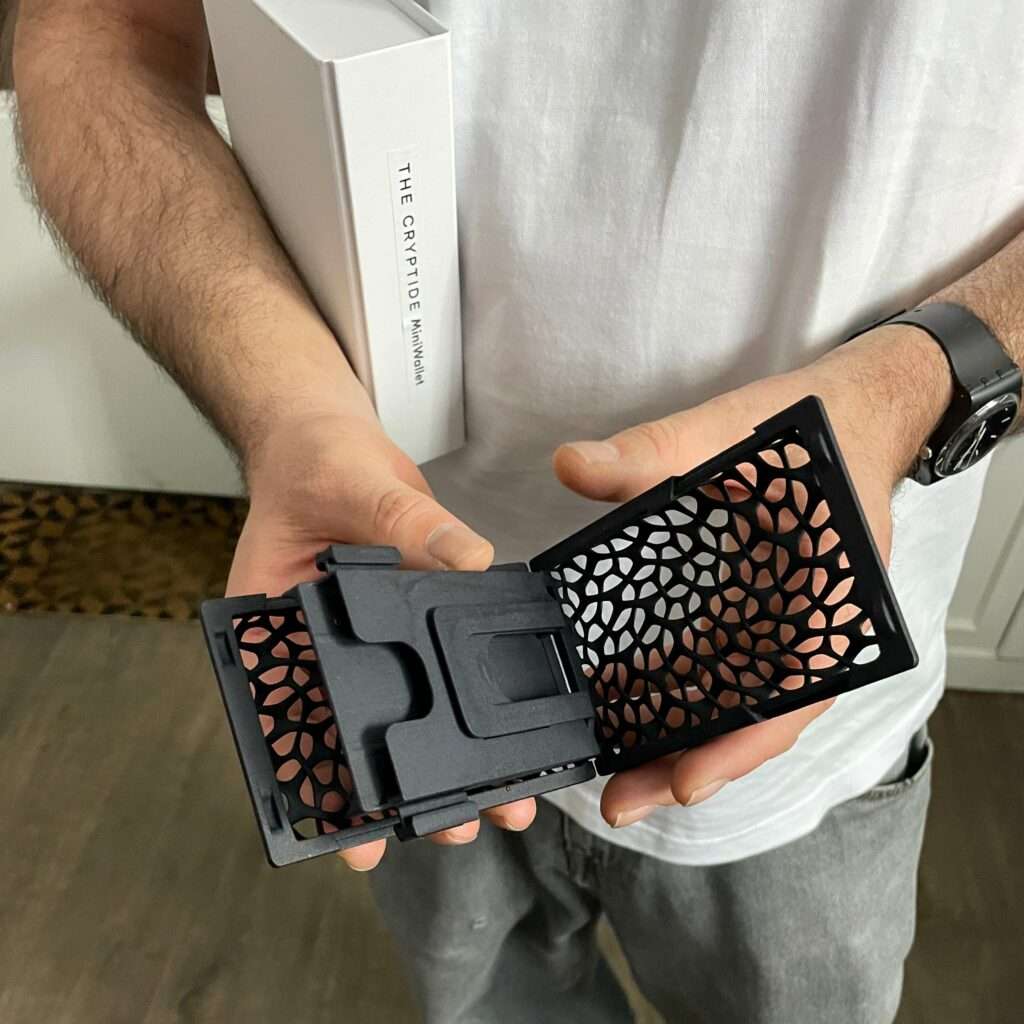
His experience in robotics, biomimicry, and ergonomic 3D furniture eventually led him to consider whether his design approach could be applied to shoes. However, he initially didn’t take the idea seriously, assuming the unconventional forms wouldn’t interest most. After testing various materials, including resin, he found a viable production method, and the unexpected reception of the designs led to broader recognition, culminating in winning the Global Footwear Awards (GFA), which he admitted made him “so happy.”
Beyond the design itself, The Cryptide One follows an on-demand manufacturing model, meaning there is no excess production. While the creative and technical aspects remain the focus, Henrich acknowledged that financially sustainable production is the next challenge. In his next step, the designer also wants to expand to other areas of fashion, including hats, T-shirts, and potentially new footwear, all of which are based on the same approach that has clearly turned into the work of his life. After talking for a good while, imagining what the next collection might look like was still a challenge; however, I couldn’t help but think that the robotic installation in the showroom could be a clue to the direction Henrich would take next.
